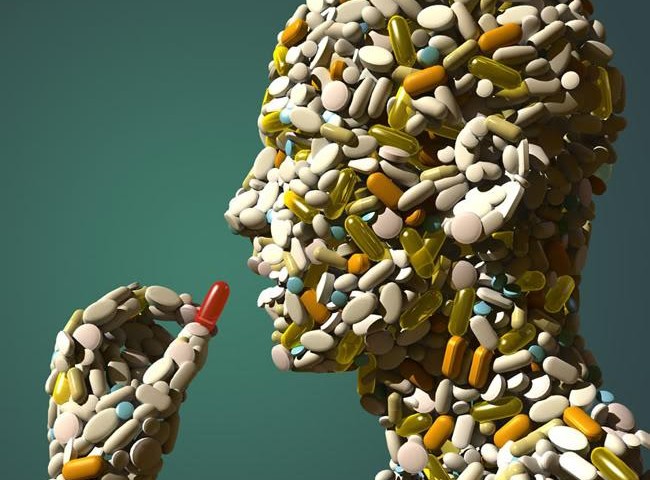America’s SSRI Addiction
America’s SSRI Addiction

It’s funny how doctors are so quick to prescribe anti-depressants like Prozac, but don’t take the time to perform a proper diagnosis. 1 in 10 Americans are on anti-depressants, and 1 in 4 report depression symptoms in the US. Doctors merely hide the symptoms, but do anti-depressants really cure depression? Is depression really a problem of a Prozac deficiency? What if a patient is having a hard time absorbing vitamin B6? Without B6, no enzyme reaction, no serotonin, no happy mood. The result? Depression – along with a host of other potential symptoms. When doctors prescribe chemical cocktails like candy, in an effort to ease patients symptoms with a one sized fits all solution, what is the result? A sick and drugged up society, with broken brains and nutritionally depleted bodies.
Our crops are genetically modified and hybridized, grown in nutritionally depleted soil, our livestock is pumped with hormones and shipped thousands of miles across the country. The standard American diet consists of 135lb’s of sugar, per person, per year. A high volume of processed food, soda’s, and empty calories. A low volume of greens, complex-carbs and naturally caught fish. The average American doesn’t drink enough water, get enough exercise or absorb enough sunlight. Not to mention that we are exposed to 80,000 mostly untested chemicals that weren’t here 30 years ago, are bombarded by electronic and industrial pollution, and drink water and eat food contaminated with pesticides and heavy metals. Is it any wonder why we have the most expensive health-care system in the world, but one of the sickest populations on Earth? In his movie Super Size Me, Morgan Spurlock ate McDonald’s 3 times a day for 30 days, most of us know that this would cause symptoms such as weight gain, diabetes and heart disease. But more shocking than his increased blood pressure and cholesterol, was his personality change, he became aggressive, depressed, restless, foggy and felt “good” only when he was eating the food. And when compounded with anti-depressants, anti-psychotics and other medications, is it conceivable that in some sensitive individuals, it would be enough to make them act extremely aggressive, violent, and detached from reality? What we have is not a gun problem, it is a nutritional and pharmaceutical issue.
Of course, this will never make it on the news, for some reason. The pharmaceutical industry spends billions of marketing dollars on direct to customer advertising, and is one of the news networks biggest customers. For whatever reason it’s not mentioned in the news, THIS should be the topic of national conversation!
“The real problem with conventional medical training is that doctors are not trained to be healers, but to be pharmacologists (except for surgeons). This problem is a direct consequence of the myth of diagnosis. We are trained to name the disease, and then assign a medication to treat it. But if the causes of a disease can be radically different in a given group of people, why should we believe that a “one-size-fits-all” prescription of medications would work to treat those underlying causes of disease? Medications can be lifesaving, and are incredibly useful if given in the right dose, for the right person, at the right time, for the right reason. But the problem in medical practice today is that our only tools are medications. The old adage, “If all you have is a hammer, everything looks like a nail,” applies to medicine today.”
“Our goal in medicine should be to find the right “medicine” for each person, without prejudice, whether it is a drug, a nutrient, diet change, detoxification, a hormone, exercise, or exorcism! We must embrace whatever works, and inquire into its effectiveness with all our scientific, economic and political resources.”
“These mood altering drugs are the fastest growing segment of the pharmaceutical market, and as a group constitute the second-biggest class of medication in total sales and prescriptions. In children alone over the three-year period from 1997 to 2000, the use of anti-psychotic medication increased by 138 percent, atypical antidepressants by 42 percent, and SSRI’s the use of anti-psychotic medication in (selective serotonin re-uptake inhibitors – they are the most commonly prescribed antidepressants) by 18 percent. The global use of ADHD medication rose 300 percent from 1993 to 2000. What’s worse is that the use of untested and potentially unsafe combinations of psychotropic drug cocktails has increased 500 percent in children. The authors of the study that pointed this out warned that our prescribing practices are not in sync with our current knowledge. In other words, current research DOES NOT support these drug-cocktail combinations.”
– Mark Hyman, MD “The UltraMind Solution”
Further Reading:



